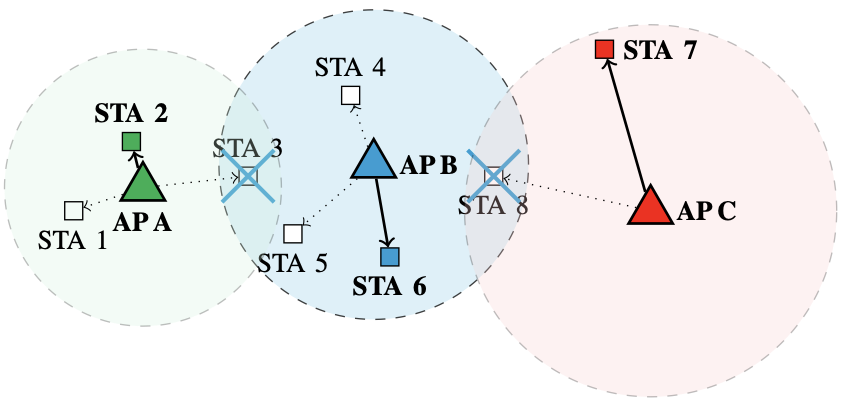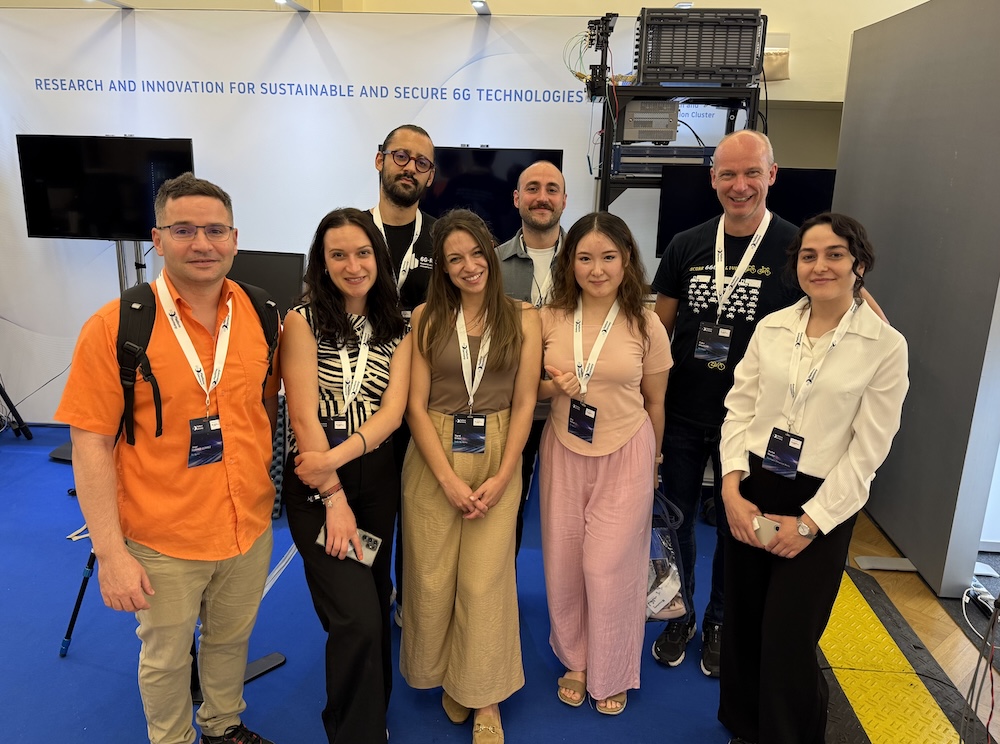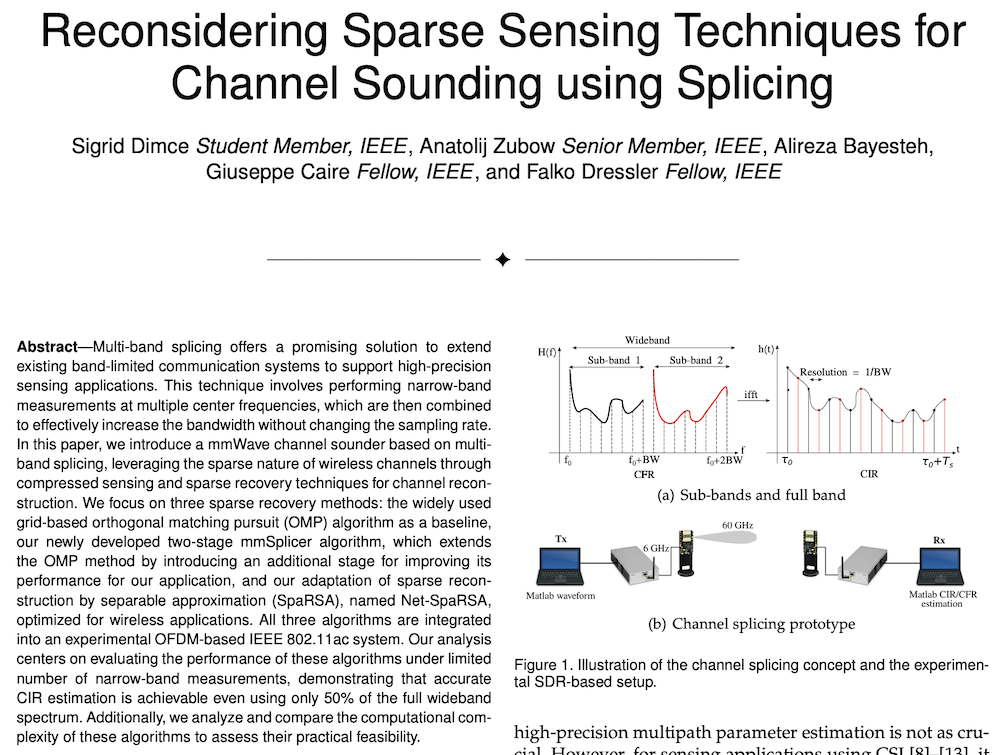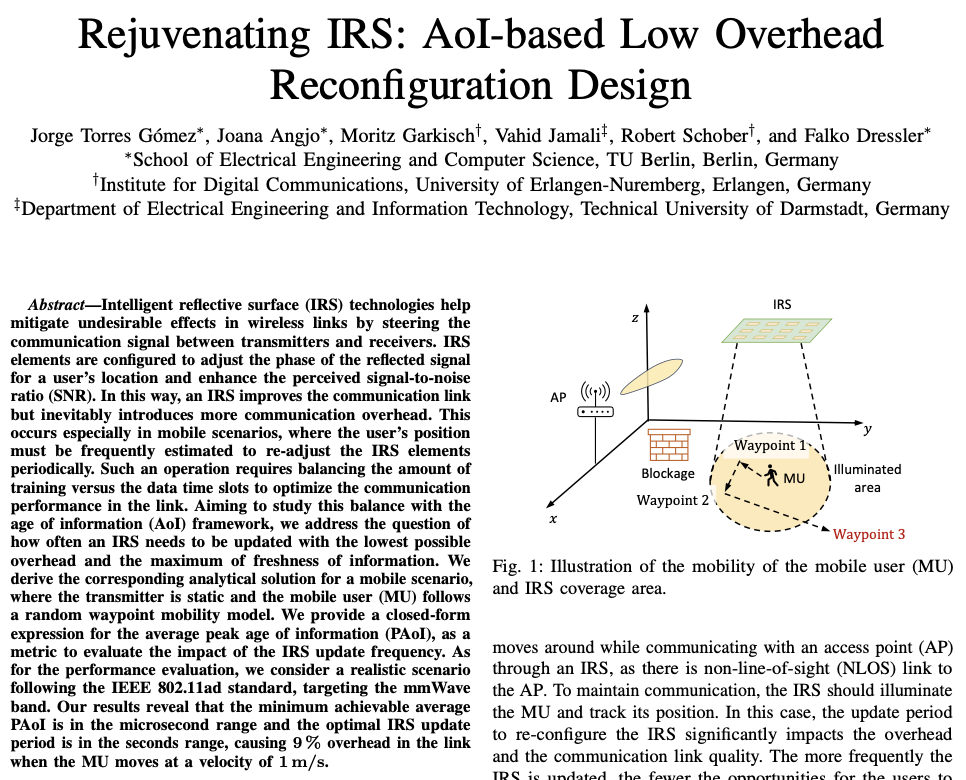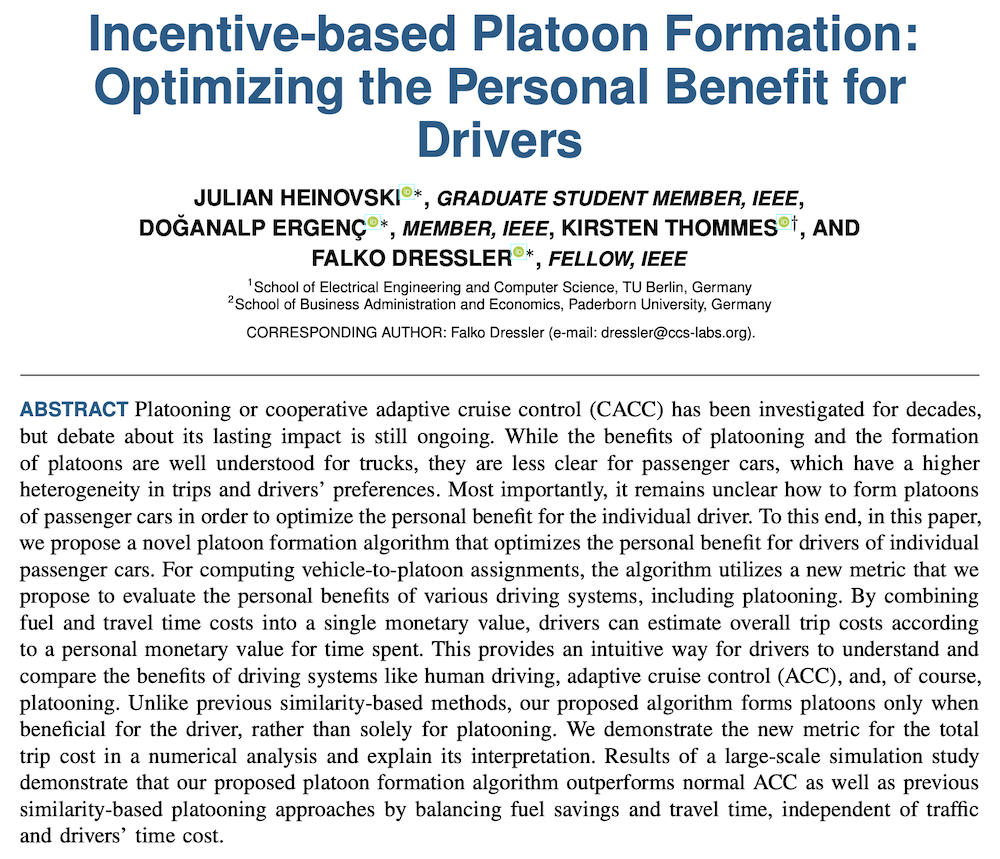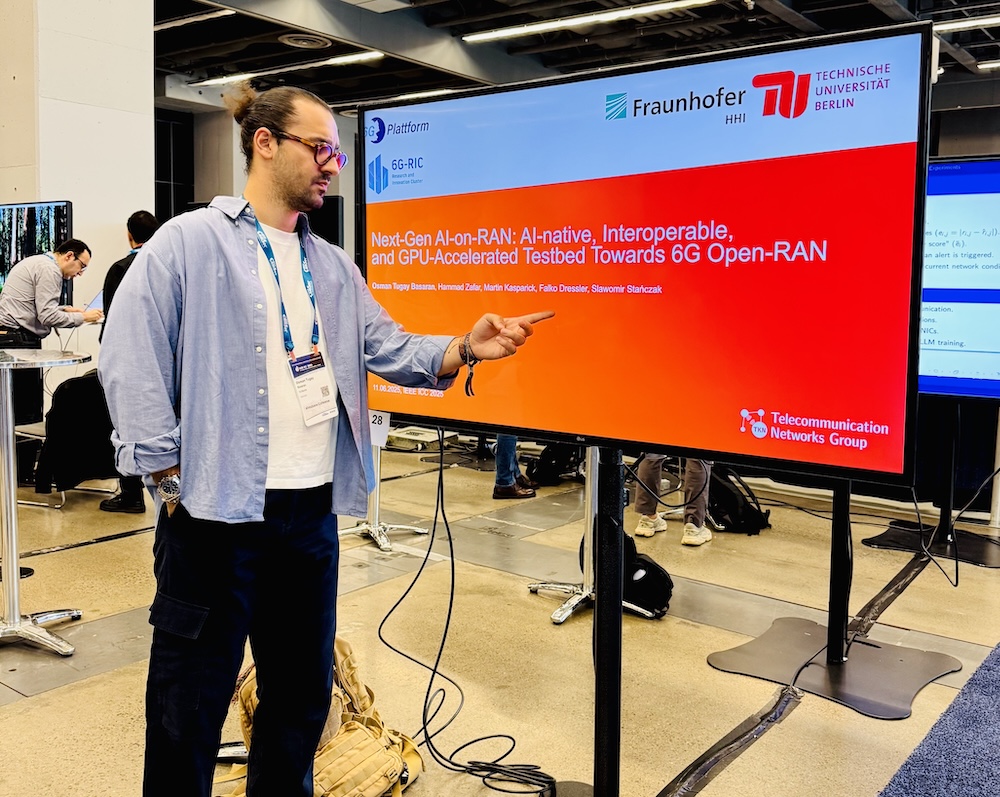Literature Database Entry
vijayaraghavan2024network
Hansini Vijayaraghavan, "Network Design and Resource Management for LiFi-WiFi Heterogeneous Networks," PhD Thesis, School of Computation, Information and Technology, Technical University of Munich (TUM), December 2024. (Advisor: Wolfgang Kellerer; Referees: Wolfgang Kellerer and Falko Dressler)
Abstract
The rapid growth in the number of internet-connected devices and the anticipated increase in global data transmission pose substantial challenges to existing wireless networks. Emerging applications like mobile metaverse, Augmented Reality (AR), Virtual Reality (VR), and high-definition streaming further strain these networks, requiring sub-millisecond latency and high capacity. This thesis addresses these challenges by exploring the potential of integrating Light-Fidelity (LiFi) and Wireless Fidelity (WiFi) technologies to meet the Quality of Service (QoS) demands of modern wireless communications. LiFi, operating in the visible light and infrared spectrum, offers a much larger spectrum compared to traditional WiFi. Utilizing existing lighting infrastructure, LiFi employs Light Emitting Diodes (LEDs) to create a high-speed, multi-user optical wireless communication system. Despite its advantages, such as high data density, suitability for Radio Frequency (RF)-sensitive environments, and inherent security, LiFi faces challenges as a standalone technology due to signal outages in overlapping cell regions and sensitivity to signal blockages. The integration of LiFi with WiFi has been proposed to form heterogeneous networks, leveraging the strengths of both technologies. However, existing literature has primarily focused on either the resource management or the design aspects of these networks in isolation. This thesis argues that a holistic approach, considering both design and resource management simultaneously, is essential for fully realizing the potential of LiFi-WiFi integration. This thesis begins with addressing the optimal placement of Access Points (APs) in LiFi-WiFi networks. LiFi's limited range and dependence on Line-of-Sight (LoS) connections present unique challenges. By introducing a multi-objective optimization framework, we consider three-dimensional AP placement to minimize costs, maximize network performance, and ensure adequate illumination. This approach is extended to heterogeneous networks, balancing coverage, cost efficiency, and user requirements through various optimization methods, including genetic algorithms and heuristic approaches. The result is a network design that not only meets technical specifications but also adapts to practical constraints and user needs, offering a significant advancement over isolated AP placement strategies. Moving from design to real-time operations, our thesis explores dynamic resource management to ensure minimal delay and high network stability. We propose delay-aware resource optimization strategies, formulating an optimization problem to minimize network delays while meeting QoS requirements. Our stability-ensuring methods address transient channel conditions and user mobility, ensuring seamless vertical handovers without requiring TCP re-connections. A mobility-aware resource allocation framework is developed to optimize resource distribution based on real-time network conditions and user demands. This comprehensive approach ensures that the network remains robust and efficient, adapting dynamically to changing channel conditions, and thus providing a superior user experience. To further enhance long-term network performance, we introduce MobiFi, a proactive resource management framework designed to anticipate user mobility and channel variations. By employing advanced optimization techniques, such as Branch and Bound-based solvers and Evolutionary Game Theory (EGT)-based algorithms, MobiFi effectively allocates resources to maintain long-term network performance. Through simulations incorporating potential prediction errors, we ensure that MobiFi remains reliable even under uncertain conditions, offering a proactive solution that significantly reduces service interruptions and maximizes resource utilization. Finally, we present ComputiFi, recognizing the potential of integrating LiFi and WiFi networks for optimized task offloading in industrial environments. This task offloading framework optimizes the distribution of tasks between LiFi and WiFi access technologies, managing data processing across local devices, APs, routers, and cloud servers. ComputiFi's dynamic strategy ensures efficient computational resource allocation, providing guaranteed low latency for latency-sensitive applications like Ultra Reliable Low Latency Communications (URLLC), factory automation, and Artificial Intelligence (AI) image classification. By optimizing the destination for task processing, ComputiFi reduces both latency and energy consumption, making it an invaluable tool for modern, high-demand applications. In summary, the contributions of this thesis significantly advance the network design and resource management of LiFi-WiFi networks. By integrating design and resource management, we offer a holistic solution that enhances network efficiency and user experience in high-density environments. Our findings provide practical solutions for the integration of LiFi and WiFi technologies, establishing them as cornerstones for 6G technology and paving the way for the next generation of indoor wireless communication systems. These outcomes will drive forward the evolution of 6G connectivity, supporting the growing demands of data-intensive applications and the proliferation of internet-connected devices.
Quick access
Contact
Hansini Vijayaraghavan
BibTeX reference
@phdthesis{vijayaraghavan2024network,
author = {Vijayaraghavan, Hansini},
title = {{Network Design and Resource Management for LiFi-WiFi Heterogeneous Networks}},
advisor = {Kellerer, Wolfgang},
institution = {School of Computation, Information and Technology},
location = {Munich, Germany},
month = {12},
referee = {Kellerer, Wolfgang and Dressler, Falko},
school = {Technical University of Munich (TUM)},
type = {PhD Thesis},
year = {2024},
}
Copyright notice
Links to final or draft versions of papers are presented here to ensure timely dissemination of scholarly and technical work. Copyright and all rights therein are retained by authors or by other copyright holders. All persons copying this information are expected to adhere to the terms and constraints invoked by each author's copyright. In most cases, these works may not be reposted or distributed for commercial purposes without the explicit permission of the copyright holder.
The following applies to all papers listed above that have IEEE copyrights: Personal use of this material is permitted. However, permission to reprint/republish this material for advertising or promotional purposes or for creating new collective works for resale or redistribution to servers or lists, or to reuse any copyrighted component of this work in other works must be obtained from the IEEE.
The following applies to all papers listed above that are in submission to IEEE conference/workshop proceedings or journals: This work has been submitted to the IEEE for possible publication. Copyright may be transferred without notice, after which this version may no longer be accessible.
The following applies to all papers listed above that have ACM copyrights: ACM COPYRIGHT NOTICE. Permission to make digital or hard copies of part or all of this work for personal or classroom use is granted without fee provided that copies are not made or distributed for profit or commercial advantage and that copies bear this notice and the full citation on the first page. Copyrights for components of this work owned by others than ACM must be honored. Abstracting with credit is permitted. To copy otherwise, to republish, to post on servers, or to redistribute to lists, requires prior specific permission and/or a fee. Request permissions from Publications Dept., ACM, Inc., fax +1 (212) 869-0481, or permissions@acm.org.
The following applies to all SpringerLink papers listed above that have Springer Science+Business Media copyrights: The original publication is available at www.springerlink.com.
This page was automatically generated using BibDB and bib2web.

